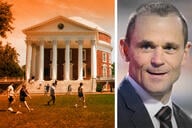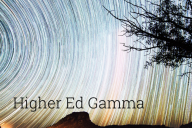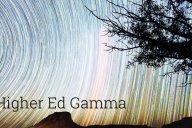You have /5 articles left.
Sign up for a free account or log in.
It would be a gross exaggeration to say that Lady Gaga has gone conservative, but her recent musical choices and public persona suggest a shift toward more traditional or classic tastes, especially when compared to her earlier avant-garde, provocative style. This change doesn’t necessarily reflect a broader political shift but may be part of a recalibration occurring in parts of the creative world.
Musically, Gaga’s recent work—particularly her album Joanne (2016) and collaborations with Tony Bennett on Cheek to Cheek (2014) and Love for Sale (2021)—marks a significant departure from her bold, electronic pop roots. These projects focus on classic American standards and jazz, genres known for their emphasis on vocal technique and timeless songwriting. This shift toward more traditional musical forms contrasts sharply with her earlier hits like “Poker Face” and “Bad Romance.” Her embrace of jazz and stripped-down performances reflects a refined, more classic aesthetic, signaling personal evolution rather than a political change.
In her personal life, Gaga has spoken openly about her Roman Catholic upbringing and has been reported to be a regular churchgoer. She’s mentioned how her faith helps her navigate personal struggles and mental health challenges. However, this focus on spirituality seems more about personal growth and resilience than a turn toward social or political conservatism.
While Gaga’s musical choices and expressions of faith may lean more conservative in some respects—particularly in her embrace of traditional styles—there’s no clear evidence that her political or social views have shifted. She remains a vocal advocate for LGBTQ+ rights, mental health awareness and progressive causes. Still, this evolution in her artistry and personal life hints at a broader cultural shift, even if the full nature of that shift is hard to define.
In the early 20th century, the creative class swung decisively leftward, with modernism becoming closely associated with left-wing causes. Initially, however, several leading intellectuals and cultural figures held conservative views similar to those of T. S. Eliot, who feared that modernity, mass culture and democratic egalitarianism were eroding traditional values—particularly those tied to Western civilization, Christianity and hierarchical social structures.
Eliot was not alone in his concerns. Figures like Ezra Pound, Wyndham Lewis, the older Max Eastman and John Dos Passos and the Southern agrarians (including Robert Penn Warren, Allen Tate, John Crowe Ransom and Donald Davidson) shared his anxiety about the erosion of cultural hierarchies and the decline of intellectual and aesthetic standards. Few, however, went as far as Eliot in advocating for a return to a Christian-based conservative order, seeking stability in tradition, religion and high culture to counter the forces of an increasingly secular, mechanized world.
Despite these conservative voices, the majority of artists and intellectuals shifted leftward. Many embraced a bohemian ethos, adopting a countercultural stance that critiqued societal norms and aligned with progressive or radical values challenging the status quo. The left’s revolutionary spirit—advocating for change and social justice—resonated with artists who saw their work as a challenge to authority or an exploration of new ideas. Movements like Surrealism and the avant-garde embodied the romantic association between art and radical change, drawing many creatives toward left-wing ideologies.
From the New Deal era onward, the creative class largely aligned itself with explicitly progressive ideals. Artists, novelists and playwrights became synonymous with rebellion, questioning authority and championing social justice causes. From the beat poets to the counterculture movements of the 1960s and 1970s, creativity often went hand in hand with political progressivism.
However, this long-standing association is beginning to fray. Increasingly, some creators are distancing themselves from what they perceive as rigid leftist orthodoxies in favor of more heterodox or historically rooted sensibilities
After decades of dominance by left-leaning perspectives, a subtle but significant shift is emerging within certain segments of the creative class—artists, writers and cultural producers—who are moving away from the progressive ideologies that have largely shaped their world.
This recalibration is marked by a growing interest in themes involving traditionalism, individualism, cultural nostalgia and critiques of left-wing dogma. While these themes once seemed antithetical to the artistic avant-garde, they are gaining traction as part of a broader cultural conversation. Importantly, this shift is not overtly political but reflects a reevaluation of values, aesthetics and creative inspiration.
Previously, more conservative sensibilities were confined to a handful of notable figures, like Tom Wolfe, Joan Didion, David Mamet and Michel Houellebecq. However, with Francis Ford Coppola’s Megalopolis, even his outlook seems to have shifted, signaling a broader movement in the creative community.
- The re-emergence of traditionalism and nostalgia. One of the clearest indicators of this shift is the embrace of traditionalism and cultural nostalgia. In contrast to the deconstructionist and postmodern approaches that have dominated recent decades, many creatives are now returning to older storytelling forms, artistic expression and even moral frameworks. The resurgence of historical fiction, for example, often focuses on themes like honor, sacrifice and duty within contexts that transcend contemporary political concerns.
Similarly, in the visual arts and music, there’s a renewed interest in classical techniques and styles. Public sculpture, once dominated by abstract and modernist forms, has seen a revival of traditional figurative work, such as the World War I memorial in Washington, D.C. This reflects a yearning for historical continuity and a reverence for the past, contrasting with modernism’s emphasis on breaking from tradition.
In music, the renewed interest in purchasing the catalogs of aging composers reflects a desire for permanence and timelessness amid rapid digital consumption and cultural fragmentation.
- Aesthetic and moral values over ideological dogma. The creative recalibration also involves a shift away from the ideological rigidity often associated with progressive discourse. While many artists still advocate for social change, some are resisting what they see as overly prescriptive approaches to art and culture. Instead of aligning their work with contemporary political agendas, these creators are focusing on broader, timeless questions of human existence, beauty and morality.
For example, Rob Henderson’s Troubled critiques the cultural assumptions of progressive elites without fully endorsing conservative ideology. Works like this reflect skepticism toward modernity’s promises, including the belief in endless progress, offering a more complex view of the human condition. This recalibration challenges orthodoxies—whether left or right—favoring creative and intellectual freedom.
At the same time, this trend is not overtly political. Many of these artists and writers are not engaging in partisan discourse but are expressing disillusionment with modern ideological frameworks. This shift is less about embracing conservatism and more about transcending the polarizing debates that have defined the cultural landscape.
- The implications of this creative shift. This shift signals a broader rethinking of how art, literature and culture relate to political and social movements. Where previous generations of creatives often tied their work directly to activism, the current recalibration reflects a turn inward—toward personal, moral and aesthetic concerns that resist easy categorization. Creators may be seeking refuge in timeless themes rather than being bound by the political moment.
This shift also raises important questions about the role of art in society. As traditional values and cultural nostalgia gain traction, there is potential for a new dialogue that bridges divides between old and new, progressive and conservative. Rather than viewing tradition and innovation as mutually exclusive, this creative movement may offer ways to reconcile these tensions, creating art that is both rooted in the past and forward-looking.
- A quest for alternate perspectives. While the creative class is still largely associated with progressive ideals, signs of a shift away from left-wing orthodoxies are becoming more evident. This recalibration is not a rejection of progressive values but an exploration of alternative perspectives—ones that embrace tradition, cultural nostalgia and moral inquiry.
By stepping outside rigid ideological frameworks, artists, writers and cultural figures are creating space for a more nuanced and complex approach to creativity—one that values aesthetic and moral integrity over political dogma. This emerging trend suggests that the future of art and culture may be more ideologically diverse and fluid than it has been in decades.
In recent years, several trends suggest a growing movement toward traditionalism, cultural conservatism or at least a rejection of left-wing orthodoxies in the arts and literature. While the cultural left continues to dominate creative spaces, new voices and narratives are emerging that challenge these long-held ideologies, pointing toward a shift in the broader cultural dialogue.
- The rise of new historical fiction. Historical fiction has become one of the most celebrated literary forms, dominating prestigious literary prizes. Unlike earlier works that focused primarily on the trauma of history—war, colonialism and oppression—contemporary historical fiction adopts a more nuanced approach. Authors like Hilary Mantel (Wolf Hall), Colson Whitehead (The Underground Railroad) and Maggie O’Farrell (Hamnet) present a more complex view of the past, exploring both its beauty and darkness while recognizing individual agency. This shift reflects a broader cultural trend toward understanding history as multifaceted, rather than a simple narrative of trauma.
- A shift in memoirs and autobiographical fiction. Memoirs and autobiographical fiction are also moving away from progressive orthodoxies. While identity remains a central theme, recent works reflect a more nuanced exploration, focusing on internal contradictions, personal responsibility and cultural contexts. Authors like JD Vance (Hillbilly Elegy) and Tara Westover (Educated) address issues of class and personal growth without adhering to progressive narratives of victimhood. These stories embrace family, tradition and individual agency, signaling a shift toward more balanced storytelling in personal narratives.
- The rise of “antiwoke” comedy. Comedy, traditionally associated with left-wing subversion, is increasingly challenging woke culture. Comedians like Dave Chappelle and Bill Burr critique political correctness and cancel culture, reflecting a broader cultural recalibration within the arts. This resistance to progressive orthodoxy in comedy suggests that the arts are becoming more ideologically diverse, with contrarian and centrist views gaining traction.
- Revival of classical and realist traditions in visual arts. In the visual arts, there is a resurgence of classical and realist styles, a departure from the postmodernism and abstraction that dominated much of the 20th century. Artists like Jacob Collins and the Grand Central Atelier emphasize craft, tradition and realism, signaling a rejection of conceptual art in favor of historical continuity. This shift is also reflected in public sculpture, such as the traditional designs of national monuments, which seek to recapture the grandeur and solemnity of earlier artistic periods.
- Traditional narrative structures in film and television. Cinema and television are also embracing traditional narrative forms. Shows like Yellowstone, which focus on rugged individualism, family and land stewardship, represent a return to American ideals. The success of Top Gun: Maverick, a film that eschews political messaging in favor of classic heroism, duty and sacrifice, further demonstrates the audience’s appetite for traditional values in mainstream entertainment.
- Revival of the Western genre. The Western genre, long a symbol of American individualism, is experiencing a revival in film and literature. Works like The Revenant and The Power of the Dog revisit Western themes with a modern lens, exploring survival, masculinity and morality. This reflects a cultural fascination with tradition and autonomy, tapping into the mythos of American origins.
- Reappraisal of literary classics. There is renewed interest in the Western literary canon, once criticized for being Eurocentric. Figures like Shakespeare and Homer are experiencing a resurgence in academia and public readings, as debates about cancel culture intensify. This return to the “classics” is often seen as a defense of enduring cultural achievements against politicized cultural studies.
- The rise of alternative platforms for creators. Alternative platforms like Substack and Patreon have allowed creators to bypass traditional gatekeepers who are often aligned with progressive ideologies. Writers like Glenn Greenwald and Bari Weiss have found success on these platforms, critiquing both the left and right from centrist or contrarian perspectives. These spaces provide new opportunities for artists to express heterodox views, free from institutional constraints.
- Nostalgia for older forms of music and literature. There is growing nostalgia for traditional forms in music, exemplified by the resurgence of vinyl records. In literature, works that reject postmodern fragmentation in favor of linear narratives and historical settings, like Anthony Doerr’s All the Light We Cannot See, are gaining popularity, signaling a renewed interest in classic storytelling styles.
- Traditionalism in architecture. Traditionalism is also re-emerging in architecture, with some architects and urban planners advocating for a return to classical forms and human-centered design. The Institute of Classical Architecture and Art promotes these values, challenging the dominance of modernist and abstract styles that once shaped urban landscapes.
- Reconsideration of national identity and patriotism. There is a growing cultural appreciation for narratives that highlight patriotism, honor and sacrifice—values often dismissed in earlier decades. Works that explore national identity from a nostalgic or traditional perspective, such as documentaries on American military history, reflect this trend.
These trends indicate a slow but significant shift toward traditionalism and cultural conservatism. While the cultural left still dominates, an emerging recalibration challenges the artistic hegemony of recent decades, suggesting that the arts are becoming a more ideologically diverse space. This shift may not be fully realized yet, but it marks the beginning of a broader movement toward ideological diversity in creative expression.
While the cultural left continues to dominate much of the creative landscape, new voices and narratives challenging these dominant ideologies are reshaping artistic dialogue. This shift is not a wholesale rejection of progressive ideals but rather a call for more balanced perspectives within the creative sphere.
As artists, writers and creators explore themes rooted in tradition, heritage and critiques of modernity, the arts are becoming more complex and dynamic. Historical fiction, for example, increasingly moves away from treating the past solely as a source of trauma, offering more nuanced interpretations of history. Similarly, there is a growing nostalgia for older musical forms, craftsmanship and classical influences in public sculpture, suggesting a renewed appreciation for traditional aesthetics.
This recalibration is not explicitly political; it reflects a deeper yearning for grounding in timeless values and a more critical view of modernity’s promises. This shift opens the door for a more ideologically diverse creative environment, where tradition and innovation can coexist. As cultural narratives expand beyond a single dominant perspective, the arts offer richer and more diverse expressions of the human experience.
As this movement gains momentum, it has the potential to reshape the cultural landscape, offering a broader range of ideas and values that resonate with a wider audience. The arts, long a space for pushing boundaries, are now a battleground for competing visions of society. The re-emergence of traditionalism challenges the progressive hegemony of recent decades, signaling that the creative world is on the cusp of a more ideologically diverse era.
This shift holds the potential to reinvigorate artistic expression, creating new ways to engage with the complexities of modern life while reconnecting with enduring values that have shaped human culture for centuries. In this evolving landscape, the arts can bridge contrasting worldviews, reminding us that the most meaningful expressions arise from engaging with diverse and opposing perspectives. This ideological diversity can enrich cultural discourse, making the arts a more dynamic and inclusive space for creators and audiences alike.



